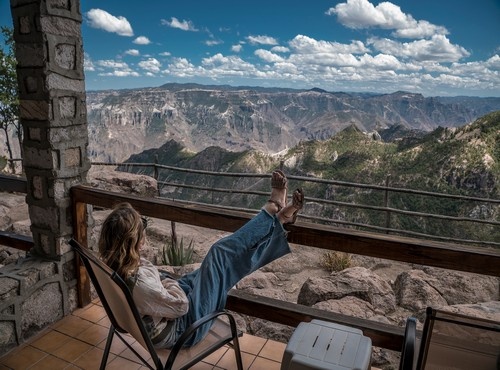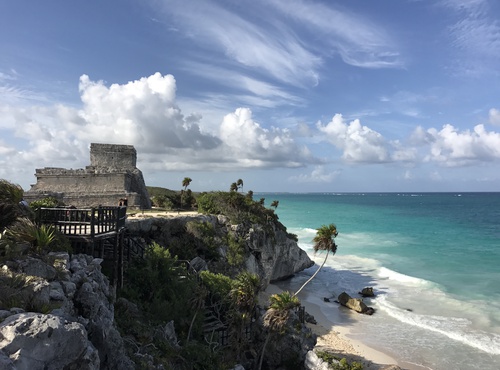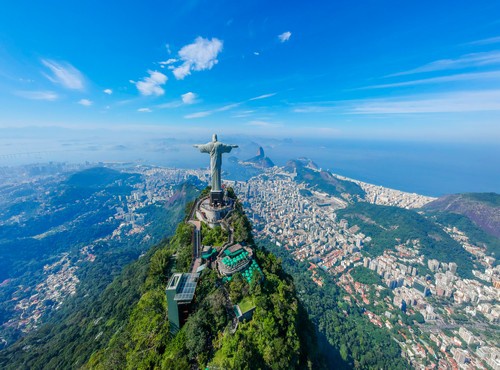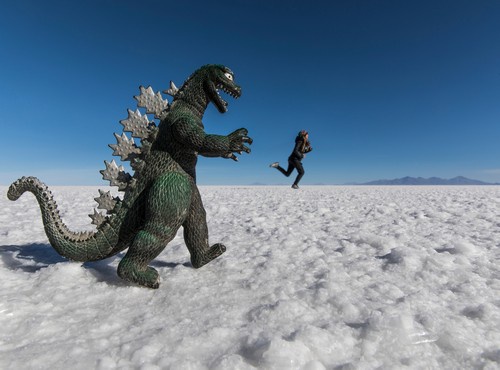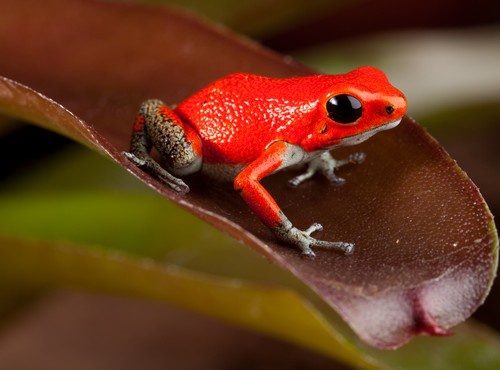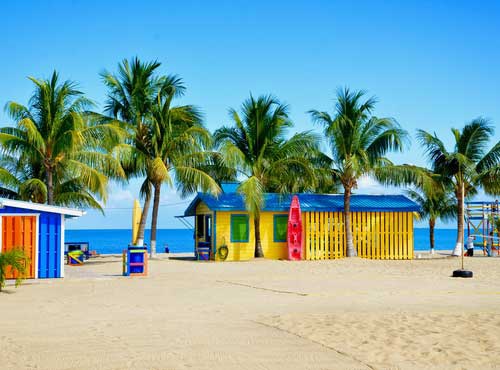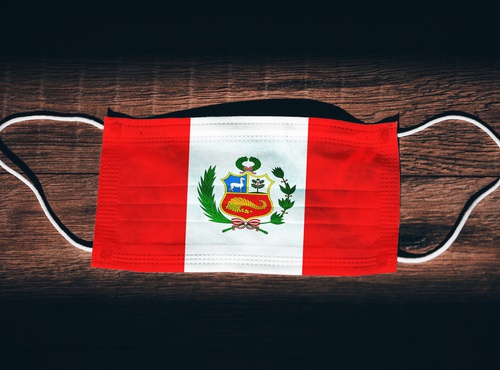
Written by:undefined undefined
Published: 24-11-2021
Incredible ingredients from the 3 different regions of Peru -The jungle, the highlands and the coast, all come together in the capital city, Lima. The “City of Kings” is a marvellous melting pot of the nation’s award-winning culinary scene. Traditional comfort food, fusion cuisine and delectable desserts are an intrinsic part of Lima’s gastronomic DNA and there is a spectacular and delectable dish for all budgets. From fine dining in world class restaurants to humble food carts, which are stars in their own right, there is literally something or everyone in this incredible gastronomic heaven!
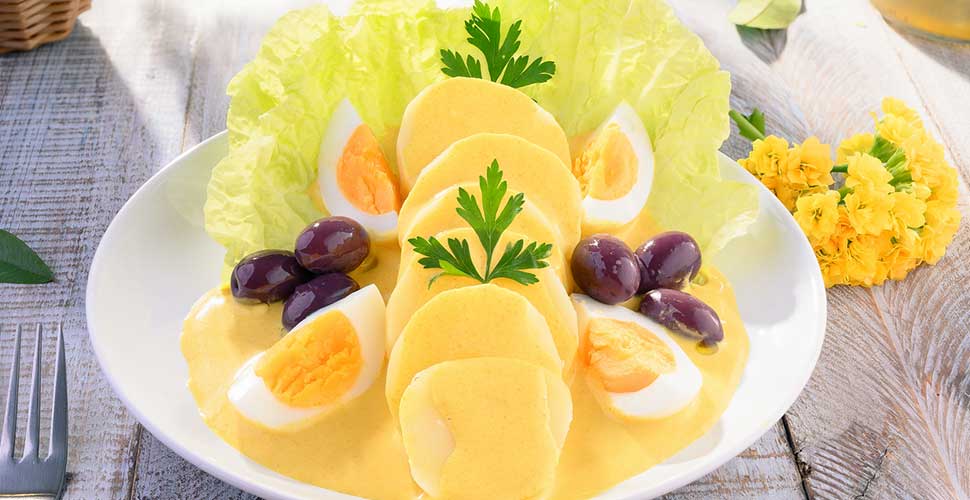
Papa a la Huancaina
Ceviche Carretillero - Peruvian seafood
You can’t truly say you have visited Lima unless you have sampled fresh ceviche from the Peruvian capital. A classic ceviche consists of diced pieces of raw white fish marinated in the juice of the acidic, green “limones”, (a Peruvian citrus that looks like a lime but is more bitter than a lemon) along with sliced red onion, Peru’s signature, mildly spicy “ají Amarillo” pepper, salt, pepper and a dash of fish broth.
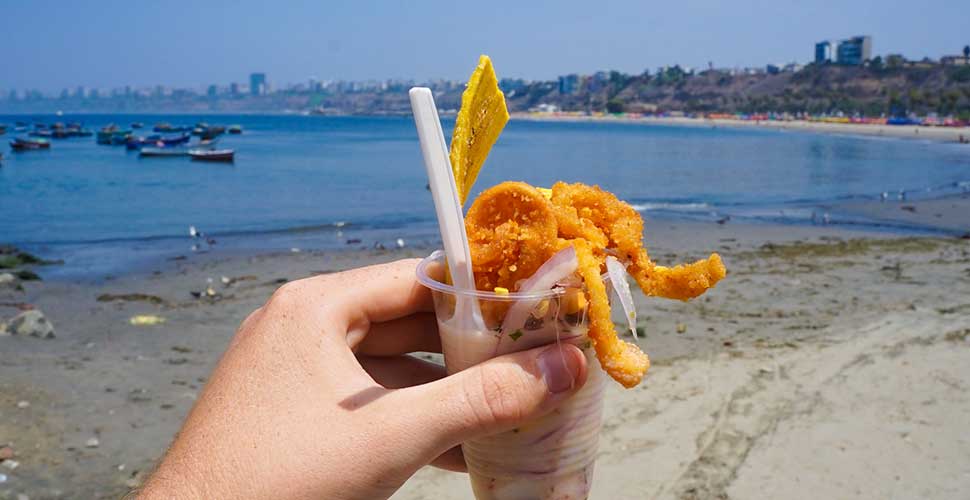
Leche de tigre on the beach
To go one authentic step further, order a “ceviche carretillero”. The national fish dish paired with fried squid is the perfect accompaniment to soak up the divine juices of a fresh ceviche. Order it from popular hole-in-the-walls like Al Toke Pez in Surquillo or Canta Rana in Barranco, for historical Lima ceviche hangouts.
Lomo Saltado
Juicy strips of sirloin beef are stir-fried, with slices of tomato, bell pepper and onions to create the traditional “lomo saltado”. Served with chipped and fried potatoes and a side of the ever-present rice, this is quite probably, the most popular plate in Peru.
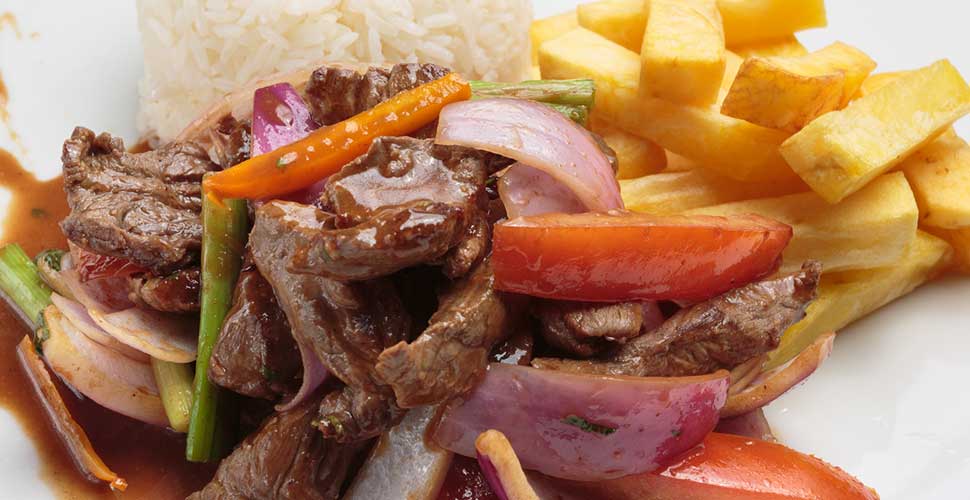
Lomo Saltado
Considering the wok-based technique and soy sauce marinade, this stir fry is a fusion food from the Chinese immigrants who arrived in Peru in the early 1800s. Alternatively, this delightful dish can be elaborated with chicken or portobello mushrooms in place of red meat.
Pan con Chicharrón
Pan con chicharron, or Peruvian pork sandwich is a street food extravanganza! Sometimes, the best way to enjoy street food, is to keep it simple. This traditional sandwich is made from dee-fried pork belly, slices of sweet potato and salsa criolla (a mix of onions, aji amarillo chilies, lime juice and a scattering of cilantro leaves), all jam-packed into a crusty French roll.
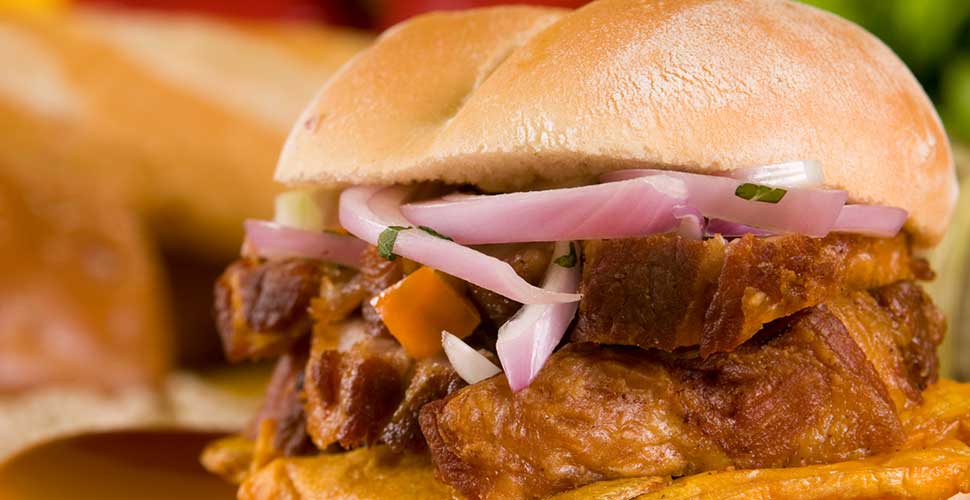
Pan con Chicharron
This tasty roll, is traditionally eaten for breakfast or after a big night out (The Peruvian kebab???) to soak up some alcohol and luckily, pan con chicharrón can be found at any time of day from El Chinito in Barranco and Central Lima, La Lucha in Miraflores or Antigua Taberna Queirolo in Pueblo Libre.
Picarones
Try to imagine a healthy yet delectable donut! Small street carts in Lima make this quite bizarre yet delectable dream a reality by serving up picarones. The dough of the traditional treat is made from sweet potatoes and a Peruvian squash called macre, mashed together with flour, sugar and yeast.
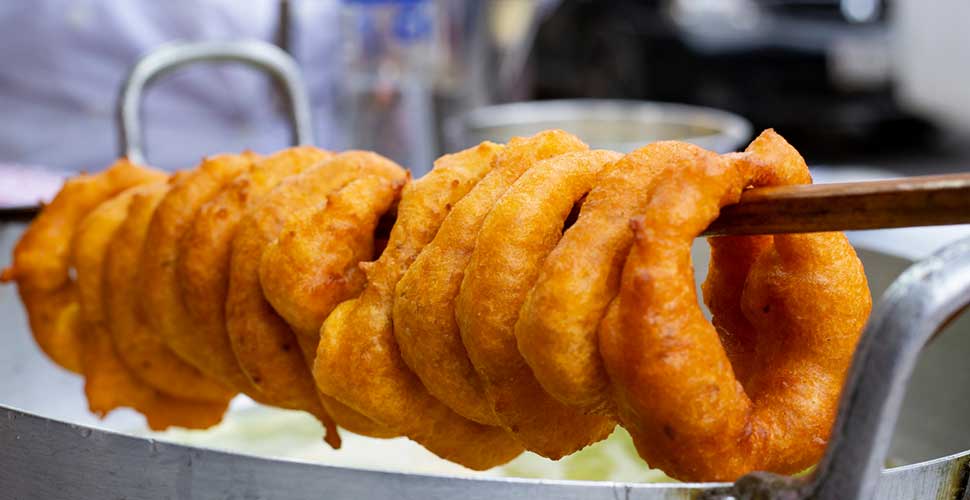
Picarrones
After adequate rising time, the dough is formed into rings that are then dropped into hot vegetable oil. To top off the donuts, a generous amount of “chancaca” (raw sugar) syrup is drizzled on top, covering your fingers in an unavoidable sticky sweetness. A bit messy but that is all part of the fun! Find Picarones carts in the Parque Kennedy, Mirafores during the afternoon or in any “anticucho” restaurant.
Causa Limeña
With over 4,000 varieties of potato found in Peru, it’s no surprise that national chefs have become super-creative with the traditional tuber. Causa consists of layers of smooth yellow potato mashed with the ají amarillo chili pepper and stacked with either shredded chicken or tuna, then topped with avocado slices.
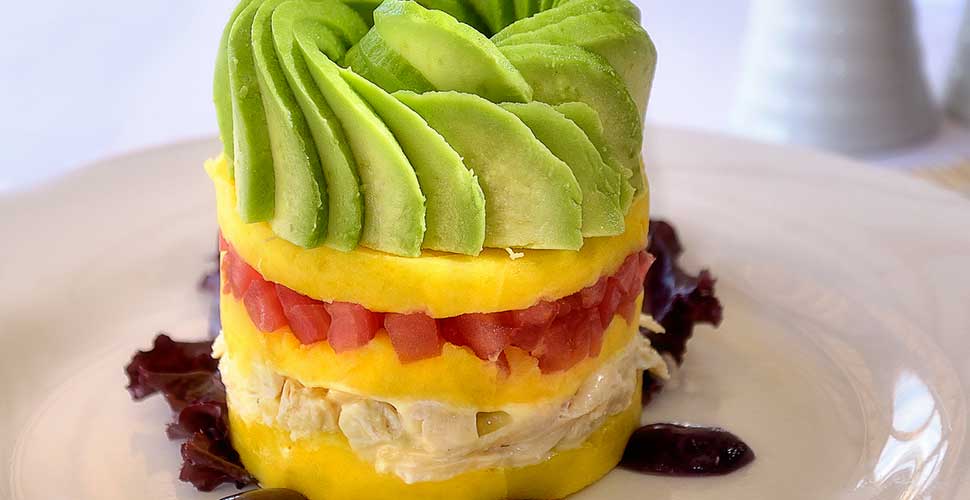
Causa Rellena
Depending on who you ask, the concept of the dish dates back to Inca times. They called potatoes as “kausaq,” meaning "giver of life" in the indigenous Quechua language. Others believe that more recently, during the war of the Pacific in 1879, when a group of innovative women discovered a cheap and transportable way to serve potatoes and keep the troops happy. For a light lunch or dinner featuring causa, head to Amankaya in Surquillo or Mi Barrunto in La Victoria.
Nikkei
Many of Peru’s best dishes are in fact fusion foods and their origins can be traced back to immigrants who arrived in Peru more than a century ago. Nikkei is a distinct cultural combination of Peruvian ingredients prepared using Japanese techniques. This fusion has even gained global status, with restaurants all over the world, preparing Nikkei, however nothing can match the dishes hand crafted by the Japanese-Peruvian community of Lima.
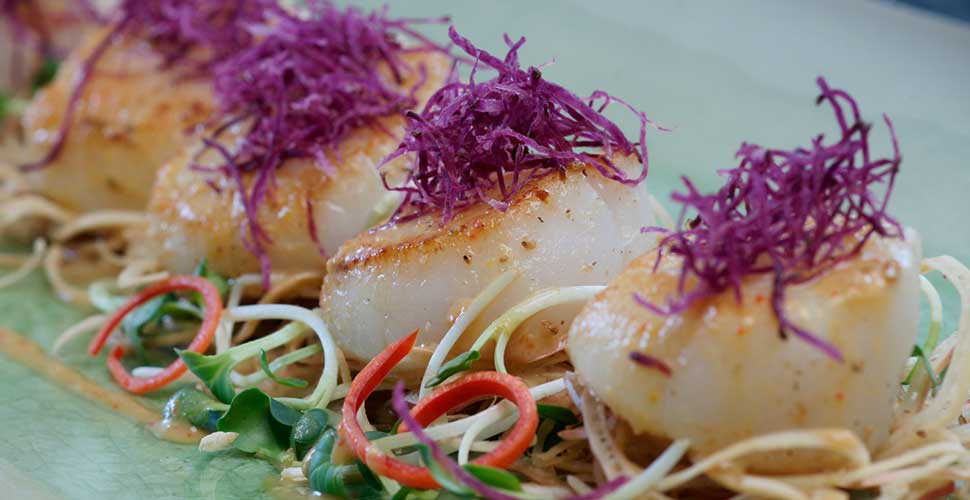
Nikkei
Nikkei consists of a number of different sushi-like dishes, but the ever-present tiradito forms a central part, consisting of fresh fish, sliced sashimi-style and drizzled with a spicy sauce. Splash out at at the top-end Maido, voted Latin America’s best restaurant, or head to Shizen Barra Nikkei, both found in the Miraflores district.
Arroz Chaufa
Another spectacular fusion food, Peruvian fried rice, known locally as “chaufa”, is perhaps the most simple yet emblematic” Chifa” dish (the fusion of Chinese and Peruvian cuisine). Rice, eggs, soy sauce, ginger, scallions and a protein of your choice (usually chicken, beef or pork) come together to create the ultimate comfort food.
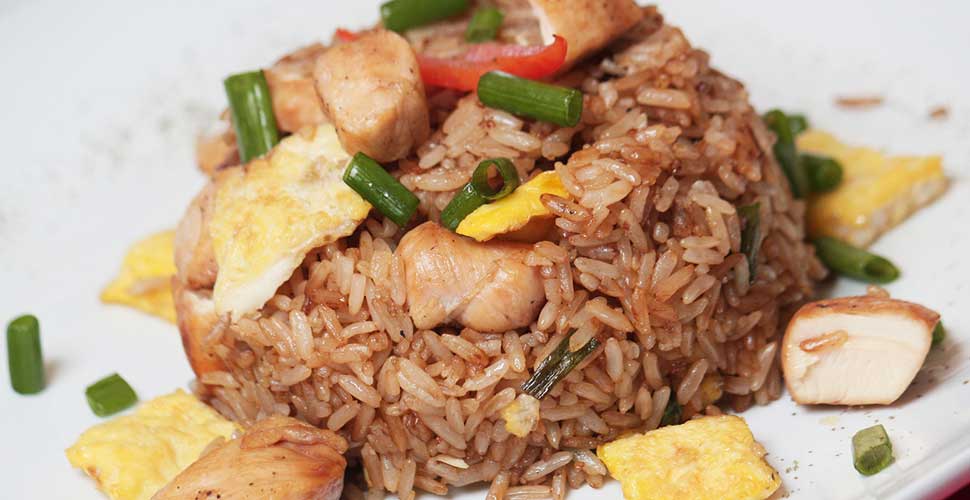
Arroz Chaufa
Delicious in its own right, chaufa most commonly serves as an accompaniment to virtually any other chifa plate, such as pollo enrollado or lomo saltado. Since the first Chinese-Peruvian fusion restaurant opened in the early 1900s, chifas have become incredibly popular in neighbourhoods of Lima, quite probably due to Peruvians love of the rice but some of the best chaufa is served at Chifa Mi Amigo or Chifa Titi, both of which are found in the San Isidro district.
Anticuchos
Anticuchos are the true version of the Peruvian “kebab” They may sound a little dubious when a local tells you that they are in fact cow’s hearts on a stick, but never say never when it comes to the super- tender and hot off the grill, snack. The concept originates from pre-Columbian times, though llama hearts have since been replaced by the cow variety.
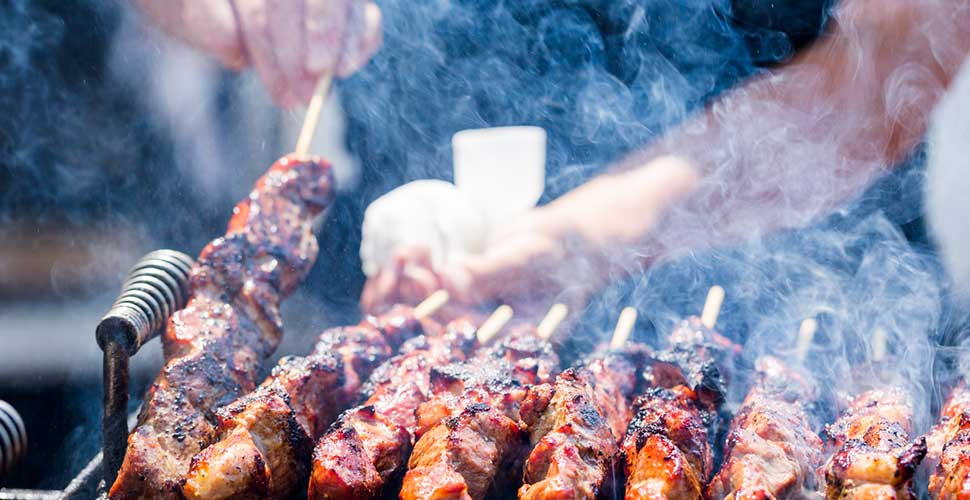
Anticuchos
Marinated in vinegar and spices, the cuts of meat are typically grilled street-side as the sun begins to set. These tasty treats have migrated to sit-down restaurants over the years where anticuchos are quite often followed by a serving of fresh picarones for dessert. Satiate your carnivorous craving at legendary spots such as “Puro Corazón” in San Miguel or at “Grimanesa Vargas” in Miraflores.
Papa a la Huancaína
Walking the streets of Lima, visitors will undoubtedly come across the lunch time specials of “menús”: These three-course lunches that are not only cheap but a great showcase of classic Peruvian dishes. Whether written on a chalkboard or a small piece of notebook paper, papa a la huancaína will likely appear as an option for the starter.
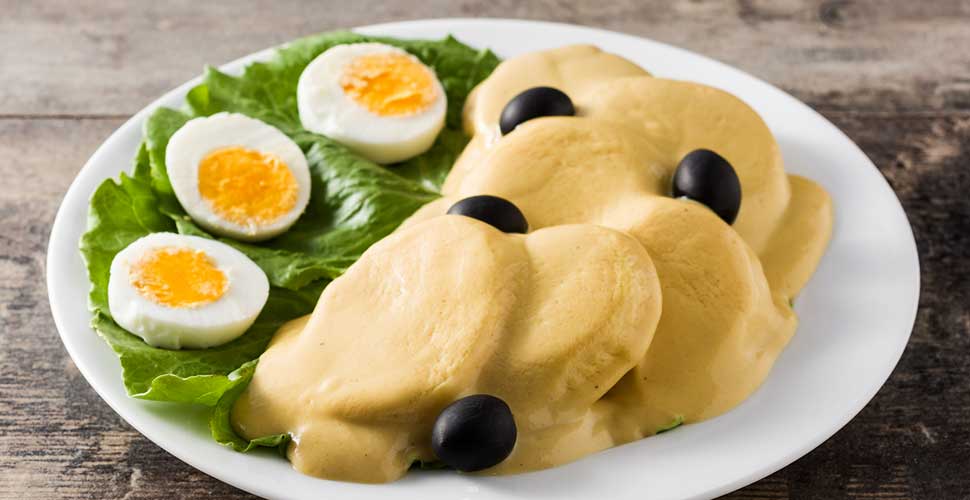
Papa a la huancaína
Boiled, cold potatoes are sliced and doused in a creamy sauce called huancaína, named after its place of origin, Huancayo, in the centre of Peru. This dish tickles the taste buds with a subtle spice from Peru’s mildly spicy yellow pepper, called ají amarillo. For many first-time visitors to Peru, papa a la huancaína is the gateway to becoming addicted to the creamy Peruvian condiment that is also served atop noodles or as a dipping sauce for grilled meat. Try it out at any local menú joint or at restaurants serving traditional criollo food such as Panchita in Miraflores.
Ají de Gallina
If there ever was a signature dish of Peruvian soul food, this would be it. Shredded chicken bathed in a creamy sauce with a pinch of spice, ají de gallina warms the soul and belly, as the hearty dish is served with, you guessed it, white rice and potatoes.
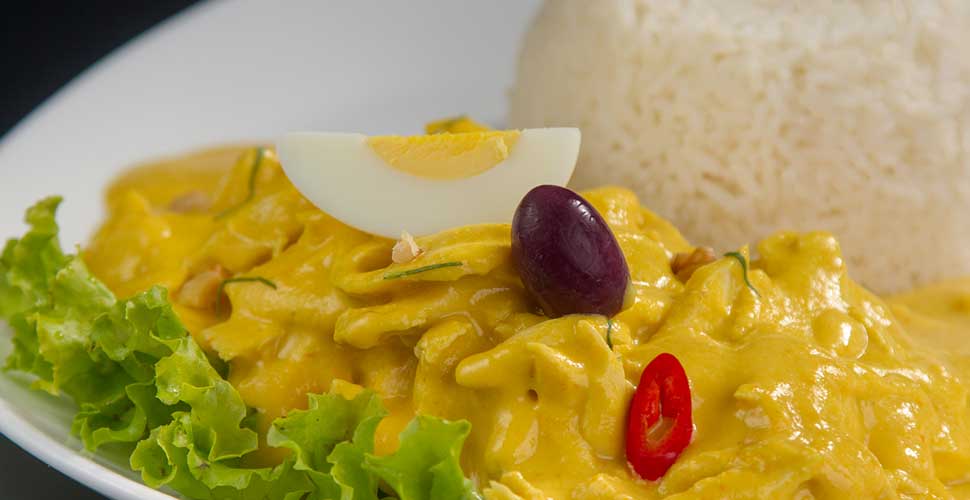
Aji de gallina
This legendary dish originated from the Incas, was adopted by the Spanish and later on, the viceroyalty of Lima where it was transformed from a sweet caramel-like flavoured thick soup, to the savoury stew that manages to woo, so many people to this day!







